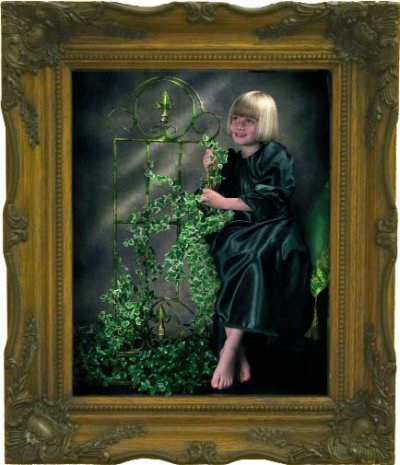articles/Paper/canvasoptions-page3
Paper Chase - Canvas options - part 3 of 1 2 3 4 5 6 7
by Mike McNamee Published 01/08/2004

It's A Frame-up Gov'
Canvas prints may be mounted up in exactly the same way as an oil painting. This usually involves a special type of frame called a stretcher within the display frame which is often a moulded, swept design. The stretcher frame is fitted with tightening wedges so that the canvas may be stretched tight across the frame like a drum skin. The canvas is attached to the stretcher by means of cotton lacing, ball point stainless steel pins or staples (in reducing order of cost). Lacing is the conservation approved method for valuable prints as it is reversible, however it is time consuming, and therefore more costly. When the stretched canvas is fitted to its articulated frame the two are place into the swept frame and secured using Z-clips. We took ourselves off to see specialist framer, Dave Davies, of Liverpool, who patiently framed an image slowly enough for us to keep stopping him to take pictures. The whole process is shown in the call out box.
The current fashion is the use of "Canvas Wrap" as a method of presenting an image. Here the image is printed onto photographic media and then bonded to canvas. This is then carefully wrapped around a fairly thick support (up to 60mm deep) so that the image wraps around and can be seen from the sides. Essentially then it is a frameless method of presentation. Loxley Colour charge £100 for a 20x16, Leach Colour have introduced Deep Stretched Canvas blocks which are 60mm deep. Chris Kay of Loxley Colour is very upbeat about canvas wrap. It has proved a very popular line for them and selling prices in the studios are ranging from £350-£400 for 20x16's and up to £800 for the larger sizes giving a good margin on the costs to the photographer.

You could of course stretch your own ink jet-on-canvas print over an MDF block but it is a job best performed by a professional framer unless you want to waste time and media learning the trade! For limited edition prints, mounting on MDF would not be considered an archival solution because of the residual acid in the substrate.
Canvas Frame-up
We called to see specialist framer, Dave Davies at his facility in the Liverpool Docklands to learn about framing up a canvas print. Dave is able to frame at museum and archival quality and is often entrusted with reframing pieces of art.Making a demonstration piece for us was relatively straightforward and he patiently slowed the process down so we could take pictures as he did it. Dave Davies can be contacted on 0151 707 9100.
1. The stretcher frame has "loose" joints which slide together but can move to accommodate the stretching process when the wedges are knocked home. The assembly can thus be re-tightened or dismantled at a later stage which can be important for collectable works of art.
2. The canvas print is stapled at one end and then stretched taut with special tongs before the compressed air staple gun is used to pin the other end.
3. The canvas is evenly stretched in all directions but the corners are not pinned so that the fancy mitre fold can be arranged,
4&5 The mitre fold is completed, the stretched and pinned.
6. The wedges are knocked home to tighten and solidify the stretcher frame.
7. Dave Davies trial fits the stretcher frame into a swept frame.
8. The Z-clips are pressed home to hold the stretcher frame in place.
9. The assembly is wired for hanging
Please Note:
There is more than one page for this Article.
You are currently on page 3
- Paper Chase - Canvas options page 1
- Paper Chase - Canvas options page 2
- Paper Chase - Canvas options page 3
- Paper Chase - Canvas options page 4
- Paper Chase - Canvas options page 5
- Paper Chase - Canvas options page 6
- Paper Chase - Canvas options page 7
1st Published 01/08/2004
last update 09/12/2022 14:52:13
More Paper Articles
There are 22 days to get ready for The Society of Photographers Convention and Trade Show at The Novotel London West, Hammersmith ...
which starts on Wednesday 14th January 2026





